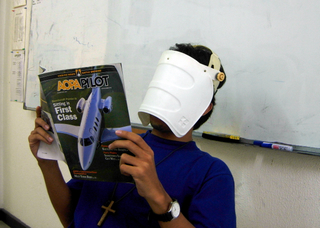Semantics point -- "When in
actual instrument conditions, leave the foggles off for sure." Just being in IMC doesn't necessarily allow you to log instrument time without a vision restricting device.

I hope when you talk to these folks, you remind them that the use of a vision restricting device when solo is absolutely prohibited regardless of flight conditions. You must have a 91.109(c)-qualified safety pilot when you use a vision restricting device.
I try to do that, too, but remember that when they're going "in and out" without the vision restricting device, they can only legally log instrument time when "in". If you're pushing to make the required 40 hours, that can be an issue.



 I hope when you talk to these folks, you remind them that the use of a vision restricting device when solo is absolutely prohibited regardless of flight conditions. You must have a 91.109(c)-qualified safety pilot when you use a vision restricting device.
I hope when you talk to these folks, you remind them that the use of a vision restricting device when solo is absolutely prohibited regardless of flight conditions. You must have a 91.109(c)-qualified safety pilot when you use a vision restricting device.